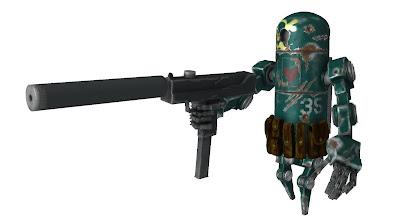In my book, the guy has an ape-ish, ogre type face. For some reason, I didn't want to do that so I just did my own thing. I didn't have any ideas ahead of time so I ended up doing everything off the cuff. There are two breaks in the video where I paused the recording which you may not notice. The first time, I paused to create the two eyeballs. I didn't place the second eye correctly so it looks too sunken in but actually it need to be moved to the side more. The second pause came when I was working on the ears. Because I stretched out the ear so much, the polygons were elongated and the sculpting wasn't looking right. So I paused to increase the number of polygons and forgot to turn the recording back on. By the time I noticed, I was already finished with the ear.
After recording the video, I made small changes and adjustments. I added a little bit of asymmetry. I think the head looks alright although I don't think it matches the body very well.

















































